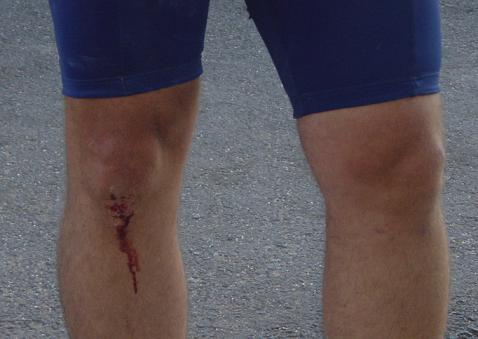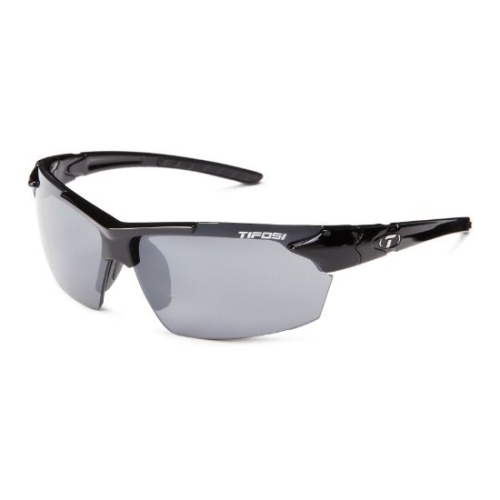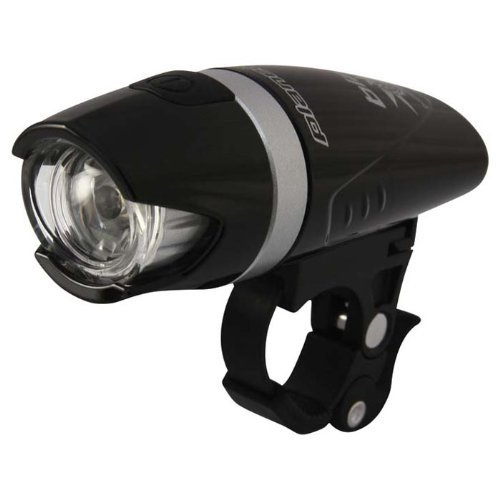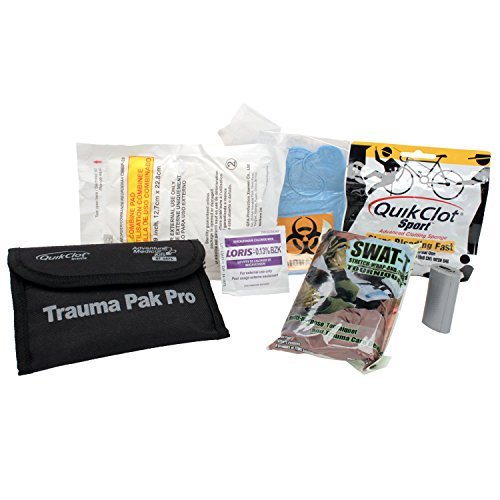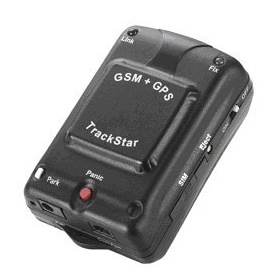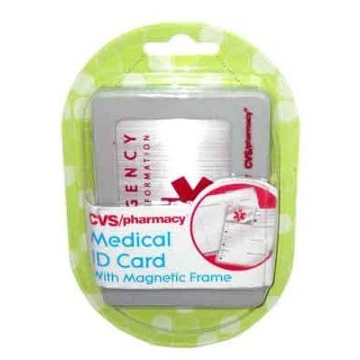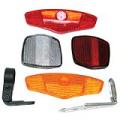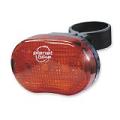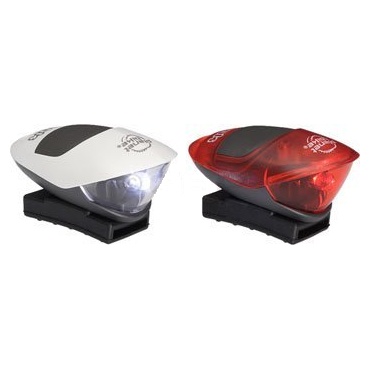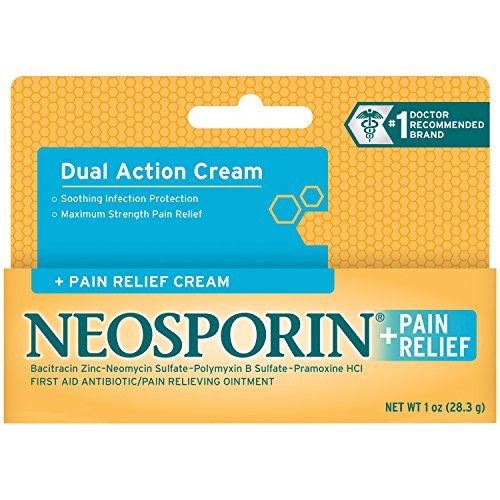The result of not following bicycle safety rules
Important Bicycle Safety Tips to Remember
Use these bicycle safety tips for a safe, happy ride:
- Wear the best bicycle helmet. Honestly this cannot be stressed enough, as this is #1 in any list of bicycle safety tips.
- Pay attention to bicycle sizing. A bike that is too big or too small for you can cause troubles. Adjust the saddle and handlebars to fit you.
- Follow this bicycle repair manual. Bicycle gears, brakes and other parts should always be in tune.
- Check bicycle tires, wheels and handlebars before you head out to make sure everything is tight and working well.
- Wear cycling clothes that make you easily visible. Avoid black, grey and other dark-colored clothes, and wear reflectors if you’re riding in the dark.
- Tuck your pant legs into your bicycling socks or wear a strap if your bicycling shorts are baggy. Nothing is worse than getting your clothes destroyed while toppling off your bike.
- Wear bike riding shoes that grip your bicycle pedals to avoid slipping. Grippe gloves are also great!
- Avoid wearing headphones, or talking on your phone while cycling. These actions not only prevent you from hearing traffic but also distract your attention from the road.
- Keep a safe distance from other cyclists and vehicles. Use bike paths or lanes where available.
- Follow the rules of cycling! Read information about the road rules.
- Always be aware of what’s going on around you and be ready to stop at any time. Also keep an eye on the road ahead so you can be prepared for road obstacles and slippery conditions.
Be aware of wet leaves, storm grates, gravel or rocks, curbs, and other obstacles
Did you know…?
Did you know that cycling is statistically safer than driving?
That’s because good cyclists take safety seriously. They wear proper safety equipment, follow local laws and regulations and stay focused and alert at all times. You should do the same. Otherwise, you might fall into the very tiny percentage of cyclists who flout safety guidelines and end up paying the price for their carelessness.
Check Out These Bicycle Safety Tips
Bicycle Safety Checklist
Bicycle Safety Checklist – Safety is very important when riding on your bike. Here’s a short guide to make a bicycle safety checklist.
Bicycle Insurance – Feeling uneasy because your bicycle is out there unprotected? Having bicycle insurance will surely calm your nerves.
Rules of Cycling – You should always be aware of your local biking rules to prevent accidents and confrontations. An informed cyclist makes it safer for everyone on the road
Bicycle Safety for Kids – Bicycle safety for kids is the primary responsibility of the adult whenever he teaches bike riding to kids.
Mountain Biking Accidents – Unfortunately mountain biking accidents are quite common. Find out what causes many bicycle accidents and how to prevent them.
Bicycle Helmet Laws – Wherever you’re cycling, you’ll want to make sure you follow the bicycle helmet laws. For instance, in some states wearing a helmet is mandatory by law.
Bicycle Safety Equipment
Bicycle Safety Equipment – Ride along urban or rural roads feeling safe and confident with the proper bicycle safety equipment. This article encompasses a few safety items to keep with you.
Bicycle Safety Flags – Why does a brand new kid’s bicycle always come with bicycle safety flags? The first time that my mom and dad bought me a bicycle I thought to myself that it looked a bit awkward with two safety flags attached to either side of the rear wheel
Bicycle Safety Lights – Bicycle safety lights are used to help keep a bicycle visible at night or in poor weather. They can also be used to increase the visibility for the rider. Read more…
Outdoor First Aid Kits – Cycling first aid kits should be both light and compact. To keep it light it should cover only the basics – medical aids that will help you get back home or to your car, or even keep you from aborting the ride.
Where to Buy Bicycle Safety Equipment Online?
If you are interested in buying bicycles safety equipment online, you are invited to take a look at these trusted online stores:
 |
 |
===============================================================================================================
===============================================================================================================
===============================================================================================================
Bicycle Helmet Laws
Find bicycle helmets Online
Wherever you’re cycling, you’ll want to make sure you follow the bicycle helmet laws. Even if wearing a bike helmet wasn’t mandatory by law, it would still be highly recommended for you to do so. It is by far the most effective way to protect yourself from head injuries in the event of a fall. Nevertheless, wearing a helmet is compulsory in certain parts of the United States as well as various countries around the globe. It would be wise to familiarize yourself with these bicycle helmet laws so you don’t inadvertently run afoul of them.
Bicycle Helmet Laws Around The World
Whatever your stance on the debate is, the fact remains that cycling without a helmet is illegal in some places and offenders will elicit a hefty fine. Let’s study some of the bicycle helmet laws around the world.
United States
There is no federal bicycle helmet law which makes helmet use by cyclists mandatory. Bicycle helmet use is, however, mentioned in the legislation of 21 states in addition to the District of Columbia and several US-owned islands. In almost all these cases, helmet use is mandated only for younger riders below a certain age.
- In Alabama, Connecticut, D.C, Florida, Georgia, Hawaii, Maine, Maryland, New Hampshire, North Carolina, Oregon, Rhode Island and Tennessee, the age limit is 16.
- In California, Delaware, New Mexico and the Northern Mariana Islands, the age limit is 18.
- In Louisiana, the age limit is 12.
- In New Jersey and Massachusetts, the age limit is 17.
- In West Virginia, the age limit is 15.
- In the Virgin Islands, all cyclists must wear a helmet.
There are a total of 14 states whose state legislation does not contain any mention of bicycle helmet laws. In these states, riders of all ages have complete freedom of choice when it comes to helmet use. These states are Arkansas, Colorado, Idaho, Indiana, Iowa, Minnesota, Mississippi, Nebraska, North Dakota, South Dakota, South Dakota, Utah, Vermont and Wyoming.
Australia and New Zealand
- There are only two countries in the world where the use of bicycle helmets is compulsory for all cyclists. There are Australia and New Zealand.
- In 1992, the whole of Australia adopted cycling bicycle laws. The law is taken very seriously and all offenders will be fined.
- Cycling in New Zealand without a bicycle helmet has been illegal since 1994. Offenders will first be slapped with a $55 infringement fee and when they are summarily convicted, may face fines as high as $1000.
- Australia and New Zealand are highly popular destinations for cycling vacations due to their spectacular natural landscapes, so remember to follow their bicycle helmet laws if you decide to visit.
Europe
If you want to cycle helmet-free, Europe is the best place to do it. Hardly any European countries impose laws on the use of cycling helmets.
- In France, Germany, Italy, Denmark, Holland and Switzerland, cyclists may cycle helmet-free without flouting any laws, but do so at their own risk.
- In the Czech Republic, cyclists under 18 years of age must wear bike helmets.
- In Iceland, Sweden and Slovenia, all cyclists under 15 years of age must don helmets. Keep your eyes peeled for developments in Iceland as there has been talk of extending the helmet regulations to adults.
- In Finland, cyclists must wear helmets, but offenders will only be cautioned and cannot be fined.
Did you know…?
Did you know that in a well-publicized study by the United Kingdom’s Transport Research Laboratory, the researchers found that between 10 and 16 percent of cycling fatalities could potentially have been prevented if the victims were wearing a helmet?
So, remember that helmet laws are not enacted because the authorities want to make life hard for cyclists. They exist to save lives.
The Debate on Bicycle Helmet Laws
Some cyclists are absolutely enraged to hear that wearing a bicycle helmet is mandatory by law. They denounce it as an affront to their personal freedom. Others think that bicycle helmet laws are a good thing as they help to prevent injuries and loss of life to cyclists. As an avid cyclist, you should take your time to familiarize yourself with both sides of the bicycle helmet law debate.
Pro Bicycle Helmet Laws
Of all cyclists who die from cycling-related injuries, head trauma is the leading cause of death. It is the government’s duty to protect their citizens from harm. Thus, they should make cycling without helmets illegal to give cyclists the best possible chance of survival in the event of a nasty fall.
Against Bicycle Helmet Laws
If the cyclist decides to take the risk of cycling without a helmet, that is his choice and he will pay the price in the event of a fall. The government has no right to curtail his freedom to do so.
Summary
I’ve covered helmet regulations in the world’s most popular cycling destinations, but the pro-helmet movement is gaining ground all the time as more governments adopt bicycle helmet laws in a bid to save lives. Before you embark on a cycling trip, always remember to check the helmet laws at your destination.
===============================================================================================================
===============================================================================================================
===============================================================================================================
Bicycle Safety Checklist
And Bicycle Inspection Checklist
Find bicycle safety equipment Online
Who needs a bicycle safety checklist? biking may seem like a harmless exercise and it really is safer than driving a car or certainly a truck. Still, it’s always better to be safe than sorry. It’s the first principle of biking – be safe. Before hopping on my bike, I always make it a point to follow my bicycle inspection checklist and to take my emergency gear. It’s really important, especially when going on bicycling tours.
A Short Bicycle Safety Checklist
What do I need to include on my bicycle safety checklist prior to each ride?
Tip: Go through the checklist both before and after a bike ride.
Over the course of a ride, your bike chain might move slightly out of place, your bike reflectors might get dirty or your saddle height might change.
You can do yourself a big favor by going through the safety checklist after your ride and making any necessary adjustments immediately– this way, there’s less likelihood that your next bicycle trip might be delayed by safety issues.
- Are the bicycle wheels spinning properly?
- Are the bicycle brakes secure and working fine?
- Are all the spokes in their proper place?
- Is the bicycle chain well lubricated? Does it fit properly?
- Is the motion of the bicycle pedals smooth?
- Are the bicycle handlebars secure and straight?
- Is the saddle properly adjusted?
- Are there any bicycle lights on the front of the bike?
- Is there a bicycle bell or a horn? Do they work?
- Are there any bicycle reflectors mounted on the bike? Are they clean and high-reflecting?
Apart from that bicycle safety checklist, you must carry bicycle safety equipment with you. I always carry equipment with me to be safe. At first, it was quite tedious for me to bring all that emergency equipment because I won’t always need it. However, I have purchased a special bag that I can attach under my bicycle seat. There are many kinds of bicycle saddle bags on the Internet and in almost every bicycle store. They come in different sizes and styles.
What Do I Need To Carry With Me on Each Ride?
A good bicycle helmet with a proper fit: To protect against possible head injuries or trauma- A MUST-HAVE.
Biking sunglasses or other means of eye protection: To ensure protection from ultra-violet rays and other harmful environmental particles.
Bicycle tire pump: In case of a flat tire.
Bicycling gloves: To protect my hands if I fall.
Spare bicycle inner tubes and a patch kit: To continue with a flat tire even if I do not have a spare. I can simply plug the hole.
Bicycle repair kit: To perform emergency repairs as needed without having to go to the bike repair shop.
Reflectors and a bicycle light: To prevent accidents and collisions.
Neon-colored cycling clothes: To be seen in the dark, and during conditions of poor visibility.
First-aid kit: For easy treatment of bike scrapes and wounds.
Cell phone: For communication and back-up help. You can also use it for navigation.
Identification card with my medical information and emergency contact person: For easy recognition in case I am injured.
Some extra cash: For emergencies.
Where to Buy Bicycle Safety Accessories?
If you are interested in buying bicycle safety accessories, such as first aid kits, helmets, gloves and cycling sunglasses, you can buy them in one of these trusted online stores, such as:
 |
Summary
It might seem like a lot of stuff to carry, but believe me – it’s not. As I said earlier, bicycle saddle bags were invented for this purpose. You can easily fit all this equipment in a bag and attach it under your seat. If you are going on a short bicycle ride near your home you may not need a bicycle safety checklist, but if you are on your way to another one of your bicycling tours, a bicycle safety checklist can be very helpful.
===============================================================================================================
===============================================================================================================
===============================================================================================================
Bicycle Safety Equipment
Bicycle Safety Lights, Bicycle Safety Flags and More
Find bicycle safety equipment Online
When my friends and I plan something big for our vacation, either calm, like our bicycling tours, or wild, like down hill biking in the rugged terrain of a local island, I always put safety first.
There are a lot of “what-ifs” that I think about. Like, what if we lose our way and get stranded in the middle of nowhere. Or what if I get lost and my friends can’t find me. Or what if it takes us longer than expected to reach our destination and we have to ride our bikes in the pitch black.
If you’re lucky enough to plan a long trip, you should make some bicycle touring preparation. This is a complex task that is both money and time consuming. You can read here more about this issue, and get some bicycle touring tips as well.
But wait: You’re not always going on a bicycle touring trip. For your weekly bicycle trip a bicycle safety checklist is enough.
Tip: Use safety checklist for regular safety checks
The old adage “It’s better to be safe than sorry” has never been more relevant than in the case of cyclists.
Before you leave your house each day, always do a check to make sure that you not only have your equipment with you, but that all of it is in fine working condition.
Use a checklist to make sure that you don’t miss anything out.
What Bicycle Safety Equipment Do I Need?
For your and your kids’ daily bicycle rides, you can never go wrong with the right bicycle safety equipment. This is why I have prepared a list of things that are very useful and important on any bike trip.
Bicycle Safety Flags
A safety flag is probably the most valuable bicycle safety equipment there is. A safety flag will make you or anyone riding a bike visible to people in the area, especially automobile drivers.
Have you ever been in a situation where you are driving and it’s quite dark and you suddenly have to swerve because you didn’t see a biker riding on the side of the road? Well, a bicycle safety flag will surely get the attention of the automobile driver.
Bicycle Helmets
Another item to add to the list of our bicycle safety equipment is the helmet. When a collision is imminent, a helmet is a very good defense against injuries to the skull. In fact, it is so important that you must never get on a bike without your helmet – even if you are only going on a short ride.
Bicycling Gloves
Another piece of bicycle safety equipment you can use is a pair of gloves. Bicycling gloves have lots of uses. They protect your hands from the freezing winter cold or scorching summer heat.
Cycling gloves also improve your grip on the bicycle handlebars, increasing overall control of the bicycle. They can also serve as added protection for the skin on your hands in case of a biking accident.
Bicycle Reflectors
If bicycle safety lights are unavailable then it may be a good idea to place reflective materials on both the back and front of the bicycle, to make sure you are seen on your bicycle night riding.
Bicycle Lights
Light are another device that will get the attention of motorists and will surely prevent any unwanted collisions. The law states that bike riders are required to have safety lights installed on the front of their bikes when riding at night.
It is also useful to install a light on the back of the bicycle. Lights are also effective during the day, especially LED lights with a flashing mode.
Where to Buy Bicycle Safety Equipment?
If you are interested in buying bicycle safety equipment you are invited to visit these trusted online stores:
 |
 |
Bicycle Safety Equipment Online
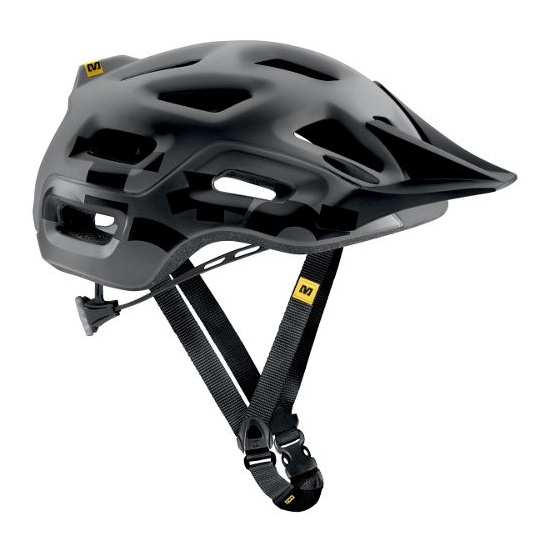 |
 |
 |
Summary
There is more bicycle safety equipment out there in the market that you can use to increase your chances of a safer bike trip. Yet the most important safety equipment you can use is already in your body’s arsenal. That equipment is your brain. Using your common sense in tackling situations and anticipating disasters before they happen is better than any reflective device.
===============================================================================================================
===============================================================================================================
===============================================================================================================
Bicycle Safety Flags
Check This Bicycle Safety Equipment

The first time that my mom and dad bought me a bicycle I thought to myself that it looked a bit awkward with two safety flags attached to either side of the rear wheel. I would eventually take both of them off, and finally took my bicycle out of the garage.
Before the front wheel even touched the driveway I heard my dad shout and my mom shriek. They ordered me to attach the bicycle safety flag that I had taken off. I did not want to attach them, because they looked un-cool, but I did not have a choice since they would not allow me to ride my bicycle without them.
Why Bicycle Safety Flags Are So Importance?
The importance of having a bicycle safety flag dawned to me when I was a kid, a few days after that incident. I figured that people, most importantly motorists, can easily see cyclists at night time when bicycles are fashioned with bicycle reflectors. But when I was driving with my mom to the mall the other day around noon, I could barely see the reflectors attached to the back seat of the bicycle on the street.
I thought to myself that if I were to take my bike out on a busy day without the bicycle flags attached, I could increase the odds of getting into an accident.
Safety flags are probably the most important bicycle safety equipment that you will ever need. I know that some of you might argue that helmets are better bicycle safety equipment than bicycle flags, but let me tell you one thing: helmets are great for when you are in an accident, but safety flags are used to prevent accidents.
As the old adage goes, “prevention is better than cure”. This is true with situations like these. Before you even get into an accident, prevent it.
What is a Safety Flag?
A typical bicycle safety flag is usually about ten to eighteen inches long and brightly colored. The colors are mostly red, orange, or yellow.
In my opinion, red is the best option to choose since this is a very bright hue and will easily be spotted by motorists and pedestrians. Though yellow is bright too, but it mostly works at night, and not in the daytime.
Bicycle flags are attached to flexible plastic shafts that are, at the very least, 6 feet long. The color, coupled with the waving “back – and – forth” motion of the flags will usually get the attention of motorists alerting them that a cyclist is within the vicinity.
Even if the cyclist is hidden behind a car, the flag will surely surpass the height of any car and will alert motorists around the area.
Bicycle Safety Flags on eBay
Last Word On Bicycle Safety Flags
Safety flags are always encouraged and will always be a part of vital bicycle safety equipment to be used by cyclists all over the world. Though it may look awkward and you might think that it is only used by children, you should consider changing your outlook about flags. Bicycle safety flags are a vital part of a bicycle.
===============================================================================================================
===============================================================================================================
===============================================================================================================
Bicycle Safety Lights
Find bicycle safety lights Online
Bicycle safety lights are used to help keep a bicycle visible at night or in poor weather. They can also be used to increase the visibility for the rider if they are riding in an area that does not have much light or street lights. Some areas mandate that a bike must have bicycle safety lights if a cyclist will be riding as part of traffic after a certain point in the night. These may be worn in conjunction with protective clothing that contains reflective properties to ensure proper visibility.
Types of Bicycle Safety Lights
There are two basic types of bicycle safety lights:
- Red & White marking lights – Light sets can be added to a bicycle to note the direction a bicycle is moving. A white light is placed in the front and a red light in the back to help keep a bicycle visible.
- Lights to illuminate the road – Bikers may also attach a light to the handlebars to help illuminate the road. This is typically used in situations where a biker is riding on uneven ground with limited visibility to avoid accidents.
Selected Bicycle Safety Lights
Planet Bike Blinky Safety
Planet Bike offers two ultra-bright LEDs to be used as a headlight and tail light. Get 220 degrees of visibility for up to one mile. Lights include mounting sets for the seat post, seat stay and handlebars so you can adjust your setup to meet your personal preferences. Lights also include a weatherproof case to protect them from any elements you may be riding in.
CatEye Bicycle Front Safety Light
The CatEye set includes two bicycle safety lights to announce a cyclist’s comings and goings. There are two flashing modes for the front light and three flashing modes for the tail light. Lights are LEDs to make them more energy efficient and provide a wider beam for increased visibility. Lights should run for up to 320 hours when run on a flashing setting or 150 hours of solid light.
Dual-Led Super Bright Bike Lights
This light set includes two lights that can easily be attached to the handlebars. The design can handle standard, vintage or oversized handlebars with ease. Lights can be set to blink or give a constant glow to protect the rider. Installation takes seconds so there is no concern that you have to wait around managing your light system if you would like to go out for an evening ride.
Planet Bike Spoke LED Light Set
The Spoke light set includes a micro taillight and a headlight that may be mounted on the handlebars or helmet as necessary. The adjustable Velcro grip makes it easy to add and remove the lights as you see fit. Lights are guaranteed to be extremely bright, up to four times brighter than previous Planet Bike models for easy viewing.
Knog Beetle 2-LED Bicycle Light
The Knog Beetle light includes 2 LEDS in a flexible silicon frame. The light can easily be mounted onto the frame to provide a constant or blinking warning light as necessary. The frame is water and dirt proof so there is no additional maintenance necessary. This light provides 35 hours of consistent light and 160 if it is kept in its blinking setting.
Where to Buy Bicycle Safety Lights?
If you are interested in buying bicycle safety lights you are invited to visit these trusted online stores:
 |
 |
 |
Summary
Bicycle safety lights are essential for anyone that regularly rides in low visibility, particularly if they are riding in an area that has a high amount of traffic. Some areas require bikers to install a light kit if they will be riding in the street or using their cycle as part of a regular commute. Lights can be set to flash, creating a warning signal for others on the road or used to illuminate the surrounding area. This will increase the visibility of the rider as well as providing an easier way to see the route you are traversing. Investing in additional safety equipment is never something that should be bypassed on a vehicle.
===============================================================================================================
===============================================================================================================
===============================================================================================================
Outdoor First Aid Kits
Use Bicycle First Aid Kits
Buy Outdoor First Aid Kits Online
Outdoor first aid kits are required for all types of sports, including cycling. Cycling might not be an extreme sport, but when you are out on forest trails or on the road, there is a chance of accidents, and it is best to be prepared.
There are different types of bicycle first aid kits, but they are quite similar in terms of their contents. While you are riding on your bicycle, there are many risks that might be lurking around. There is a chance of slipping from the bike or colliding with something. Of course every cyclist must wear protective gear, but a first aid kit is a must when going cycling.
Did you know…?
Did you know that placing some antibiotic cream in your first aid kit can really help with any chafing caused by long-distance cycling?
When it comes to these kinds of abrasions, it is extremely important that you keep them from getting infected. Otherwise, they will not only become very painful, but may leave nasty scars. If you’re on a long distance cycling trip and develop some abrasions, it’ll be handy to have antibiotic cream in your first aid kit. First aid kits aren’t just for serious injuries!
Contents
Outdoor first aid kits had better be both light and compact, so they should cover only the basics – medical equipment that will help you to get back home or to your car, or even keep you from aborting the ride.
What should you put in the biking first aid kit? There are many things that are required in a kit. You can get these kits ready made from a store, or you can make them yourself. Just get an empty kit or plastic bag and arrange these things:
- Bandages – to cover the affected area
- Antibiotic ointment – to apply to the affected area
- Antiseptic wipes – to wipe away dirt from the affected area
- Scissors – to cut bandages or parts of clothes if required
- Cold pack – to soothe any sore area
- Cotton – to wipe blood if there is bleeding
If you are allergic to something, or if you are on medication, then you must bring your medicine along. In fact, your medication should be with you wherever you go. This will keep you safe in any emergency conditions.
Buying Outdoor First Aid Kits
You can check online sources to find many first aid kits that suit your needs. There are different kits for different needs. For example, a bicycle first aid kit will be different from a hockey first aid kit. Make sure you get the right kit for cycling.
 |
 |
Last Word About Outdoor First Aid Kits
Before you take your bike out to go for a ride, make sure you have a first aid kit. In addition, you must also always wear a helmet while cycling and carry all the necessary safety equipment. To be safe, follow these bicycle safety tips. For more bicycle safety tips you are invited to read this book.
===============================================================================================================
===============================================================================================================
===============================================================================================================
Rules of Cycling
Know Before You Go

While you should check your local road rules (here is a list of helmet laws throughout the United States) for specific rules of cycling in your area, there are some biking road rules that always apply when biking on the road. By being a safe and smart cyclist you will prevent accidents and make it easier for cars and cyclists to drive together on the road.
Main Biking Rules
Tip: Don’t take anything for granted
Don’t assume you can predict other road-users’ actions with any accuracy! The most deadly flaw a cyclist can possibly have is a misplaced sense of confidence.
Don’t ever assume that other motorists or cyclists will abide by traffic laws and good common sense like you do – they might not acknowledge your right of way or signal before changing lanes. Always stay alert so you’ll have time to react to unforeseen circumstances.
- Wear a good bicycle helmet – Most jurisdictions require you to wear a helmet and you can actually be fined if you don’t wear one.
- Never ride against traffic – Ride on the right side of the road (unless you are cycling in the UK, Japan or in any other “left-side-driving” country).
- Use bike lanes and designated bike routes whenever you can.
- Be wary of parked vehicles. Hazards include kids, animals and car doors opening.
- Stop at all stop signs and obey traffic lights.
- Ride in single file on the street (not the sidewalk) when riding in a group.
- Always pass left or right according to the local driving side, just like a car does, when passing other cyclists. Always let another cyclist know you’re doing so by saying, “On your left!”
- Use hand and arm signals when turning or stopping. Your left arm straight out means left, left arm upright “L” (or right arm straight out) means right and upside-down “L” means stop. This helps other traffic predict your movements.
- When riding at night always use bicycle reflectors and a rear bicycle lights.
Biking Road Rules from the Driver Point of View
The Bicycle Countermeasure Selection System ( BIKESAFE ) makes a great point about cycling on streets where cars are required to drive more slowly.
A vehicle going at a higher speed is less likely to slow down or stop in time and can cause more serious accidents. By choosing side streets or paths that are away from the epicenter of traffic you’ll be much more comfortable.
The National Highway Transportation Safety Administration ( NHTSA ) claims that 46,000 cyclists were injured in 2003. Many governments, such as the state of Oregon, are implementing infrastructure grants to create safe cycling paths and provide more information for cyclists ride safely around busier city centers.
You can also visit Bicycle Safety, BIKESAFE and NHTSA for a number of good articles on biking rules, pedestrian safety and biking road rules.
Rules of Cycling on YouTube

Amy Webster


